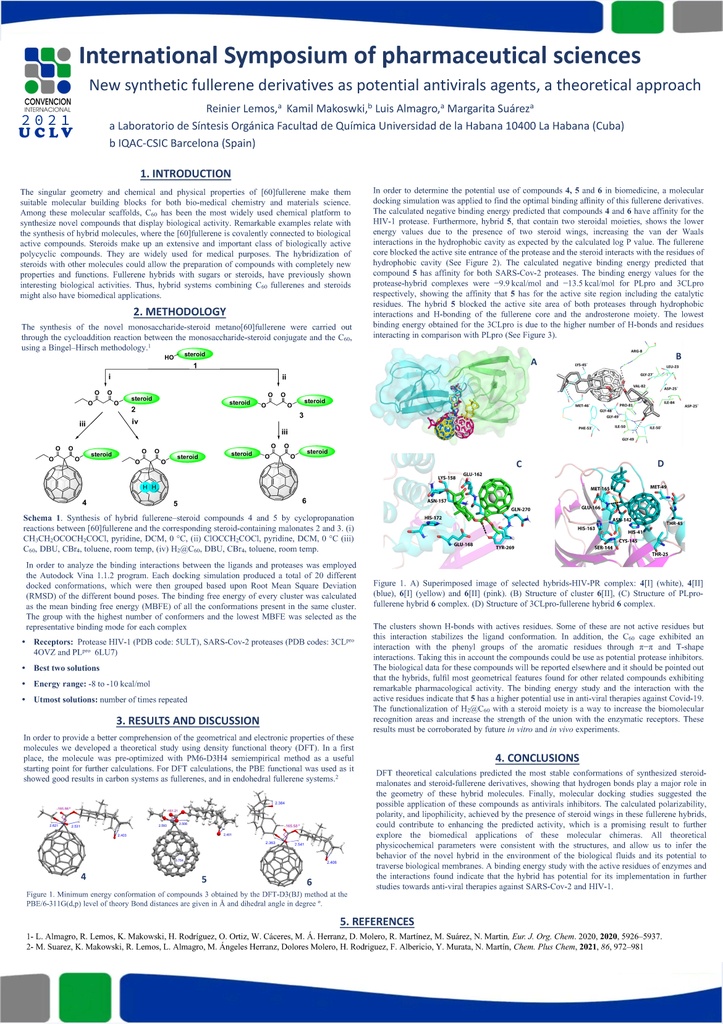Executive Secretary

Simposio Internacional de Ciencias Farmaceúticas
SICF

Abstract
[60]fullerene-steroid hybrids have been synthesized by Bingel−Hirsch reaction as a contribution to the chemistry of carbon nanoforms. The hybrids were characterized by different spectroscopic NMR experiments and analytical techniques. Theoretical calculations using the DFT-PBE method was performed to predict the most stable conformations for the synthesized compounds and the HOMO-LUMO energy. Some properties as polarizability, dipole moment, lipophilicity, solvent-accessible surface area and topological polar surface area, were calculated. Fullerene and its derivatives have potential antiviral activity due to their specific binding interactions with biological molecules. The ability of fullerene derivatives to interact with the active site of HIV and SARS-Cov-2 proteases was employed the Autodock Vina program. The C60 cage exhibited an interaction with the phenyl group of the PHE through π –π and T-shape interactions. Besides, it was observed that the steroids moieties formed H-bonds with the amino acid residues in the cavity. In addition to van der Waals contacts with the nonpolar protease surface, thereby improving the binding relative to the tested compound. Protein–ligand docking revealed several important molecular fragments of that are responsible for the interaction, thus paving the way to study the possible application of these nanoforms in biomedicine.
Resumen
Los híbridos de fullereno-esteroides se han sintetizado mediante la reacción de Bingel-Hirsch como una contribución a la química de las nanoformas de carbono. Los híbridos se caracterizaron mediante diferentes experimentos espectroscópicos de RMN y técnicas analíticas. Se realizaron cálculos teóricos utilizando el método DFT-PBE para predecir las conformaciones más estables para los compuestos sintetizados y la energía HOMO-LUMO. Se calcularon algunas propiedades como polarizabilidad, momento dipolar, lipofilicidad, área superficial accesible al solvente y área superficial polar topológica. El fullereno y sus derivados tienen actividad antiviral potencial debido a sus interacciones de unión específicas con moléculas biológicas. La capacidad de los derivados de fullereno para interactuar con el sitio activo de las proteasas del VIH y del SARS-Cov-2 se empleó en el programa Autodock Vina. La jaula C60 exhibió una interacción con el grupo fenilo del PHE a través de interacciones π –π y en forma de T. Además, se observó que los restos de esteroides formaron enlaces H con los residuos de aminoácidos en la cavidad. Además de los contactos de van der Waals con la superficie de la proteasa apolar, mejorando así la unión con respecto al compuesto ensayado. El acoplamiento proteína-ligando reveló varios fragmentos moleculares importantes de los que son responsables de la interacción, allanando así el camino para estudiar la posible aplicación de estas nanoformas en biomedicina.
About The Speaker

MsC. Reinier Lemos García

